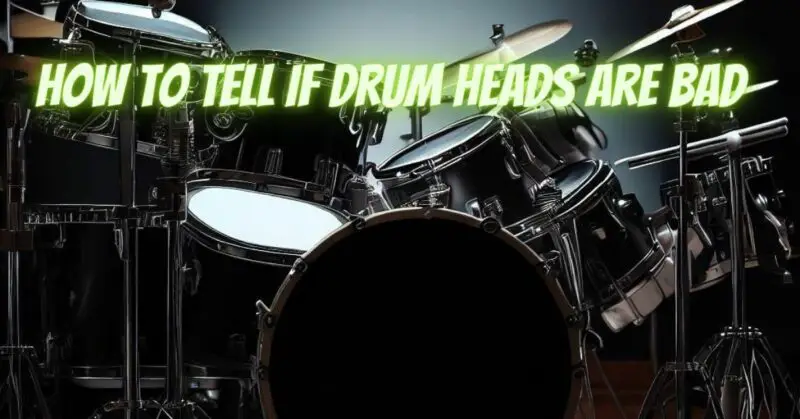Drumheads play a crucial role in shaping the sound and performance of a drum. Over time, drumheads can wear out and lose their optimal playing condition. It’s important for drummers to be able to recognize the signs of bad drum heads to maintain the best sound quality and ensure a satisfying drumming experience. In this article, we will explore the key indicators that can help you determine if your drum heads are in need of replacement.
- Visual Inspection: Start by visually inspecting your drum heads for any visible signs of wear and tear. Look for the following indications:
- Cracks: Check for any visible cracks on the drumhead surface. Cracks can significantly affect the sound quality and can cause the drumhead to break under pressure.
- Frayed Edges: Examine the edges of the drumhead for fraying or unraveling. If the edges appear worn or damaged, it can affect the drumhead’s durability and tuning stability.
- Dents and Pockmarks: Inspect the drumhead for dents or pockmarks, which can occur from excessive striking or improper handling. These imperfections can cause uneven tension and affect the drum’s tone.
- Tone and Resonance: Play the drum and listen carefully to the tone and resonance. Signs of bad drum heads can be identified through sound abnormalities, such as:
- Dull and Muffled Sound: If the drum produces a noticeably dull or muffled sound, it may indicate that the drumhead has lost its responsiveness and is no longer capable of producing clear and defined tones.
- Lack of Sustain: If the drum’s sustain is significantly reduced or if the sound dies out quickly, it could be a sign of worn-out drum heads. Over time, drumheads lose their ability to resonate effectively, resulting in diminished sustain.
- Unwanted Overtones: Pay attention to any excessive or undesirable overtones. If the drumhead produces uncontrollable vibrations or resonances that interfere with the desired sound, it may indicate a problem with the drumhead’s condition.
- Tuning Stability: Consider the tuning stability of the drumheads. Signs of bad drum heads related to tuning stability include:
- Difficulty Holding Pitch: If the drumheads struggle to hold their pitch, even after careful tuning, it may indicate that they have stretched or worn out. This can result in inconsistent and unpredictable tuning across the drum set.
- Uneven Tension: Check for inconsistencies in tension across the drumhead. If certain areas feel looser or tighter than others, it can affect the drum’s overall tone and responsiveness.
- Age and Usage: Lastly, take into account the age and usage of the drumheads. Drumheads that have been used extensively over a long period of time are more likely to exhibit signs of wear and deteriorate faster than newer heads. If you’ve been using the same drumheads for an extended period, it might be a good idea to consider replacement, regardless of visible signs of damage.
Conclusion:
Identifying bad drum heads is crucial for maintaining optimal sound quality and ensuring an enjoyable drumming experience. By visually inspecting the drumheads for cracks, frayed edges, and dents, and paying attention to the tone, resonance, tuning stability, and age of the drumheads, drummers can determine when it’s time for replacement. Regularly assessing and replacing worn-out drum heads will help preserve the quality and performance of your drum set, allowing you to continue creating great music.

